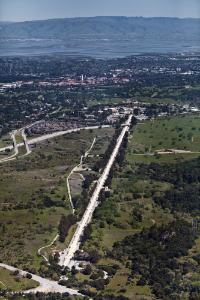SLAC National Accelerator Laboratory
Contact: Jeff Corbett
Home to the world's longest particle accelerator and top-notch research facilities, SLAC National Accelerator Laboratory attracts thousands of users, visiting scientists and students from all over the world each year.

Building on its success, an expansion project, LCLS-II, is scheduled to open to users by 2019. Over the past decade SLAC has built up extensive laser capabilities, with in-house expertise to support LCLS and other research across the lab.
SLAC's other premier user facilities include the Stanford Synchrotron Radiation Lightsource, which provides bright, broad-spectrum X-rays for research ranging from nanotechnology to human health, and the Facility for Advanced Accelerator Experimental Tests (FACET), a test bed for next-generation particle accelerators. SLAC is a U.S. Department of Energy national laboratory managed by Stanford University; other major research areas with close coupling to Stanford include basic photon science, particle physics, astrophysics and cosmology.